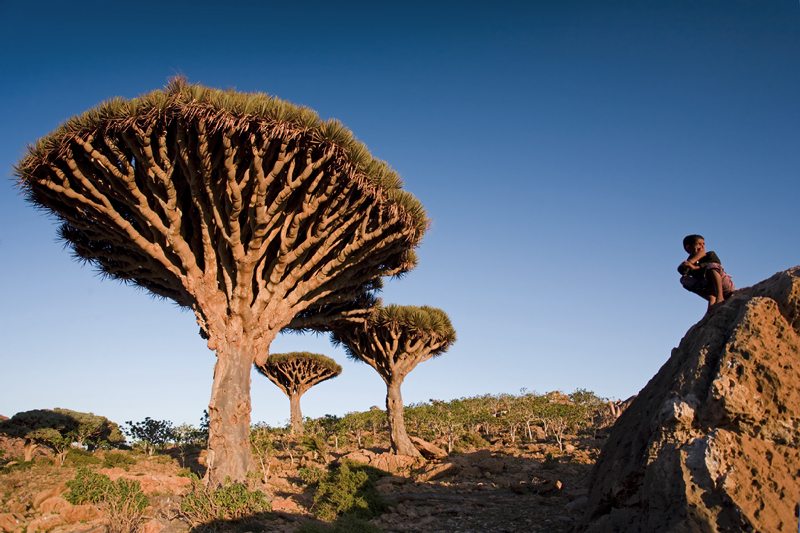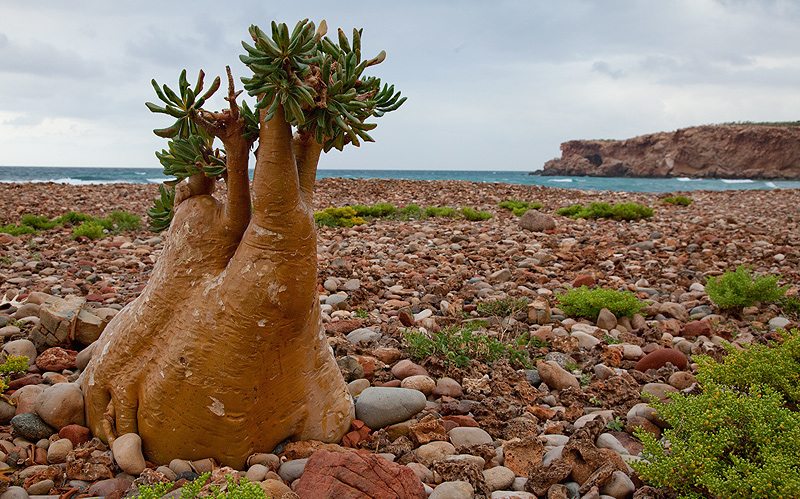Socotra Island, Yemen
Episode #9 of the course “Natural Wonders of the World”
Off the coast of Yemen in the Indian Ocean lies a series of tiny islands, including Socotra Island (also spelled “Soqotra”), about 80 miles long by 30 miles wide. Because of its historical isolation, the island is home to a number of unique indigenous plants that make it unlike anywhere else in the world; in fact, it has been called “the most alien place on earth.”
The desert rose tree that grows on Socotra may be related to similar plants in Asia and Africa, but it has become squat and short to adjust to the island’s droughts. It grows in strange shapes to anchor itself to the rocks, and it produces striking pink flowers. The island also sports cucumber trees and dragon’s blood trees, which have adapted their root structure to absorb moisture from the mist in the air. These plants may now become endangered due to climate change caused by global warming.

Although Socotra first made contact with Greek traders to the Indian Ocean islands in the first century BCE, it remained largely unexplored and unvisited until the Portuguese became interested in its location during the 16th century CE. After changing hands in European powers for centuries, Socotra Island became a part of South Yemen in 1967. It is a hot, humid climate with a great deal of mist, and the trees that grow there have adapted to the environment with their strange shapes and structures.

In 2008, the island was labeled as a World Heritage Site by UNESCO. Its plant life includes trees that can’t be found elsewhere on earth, and scientists have recently begun to discover secrets of international history and culture deep within its limestone caves. In the last decade, archeologists have made promising discoveries about traders and island inhabitants as far back as 100 BCE.
Learn Something New Every Day
Get smarter with 10-day courses delivered in easy-to-digest emails every morning. Join over 400,000 lifelong learners today!
Share with friends

